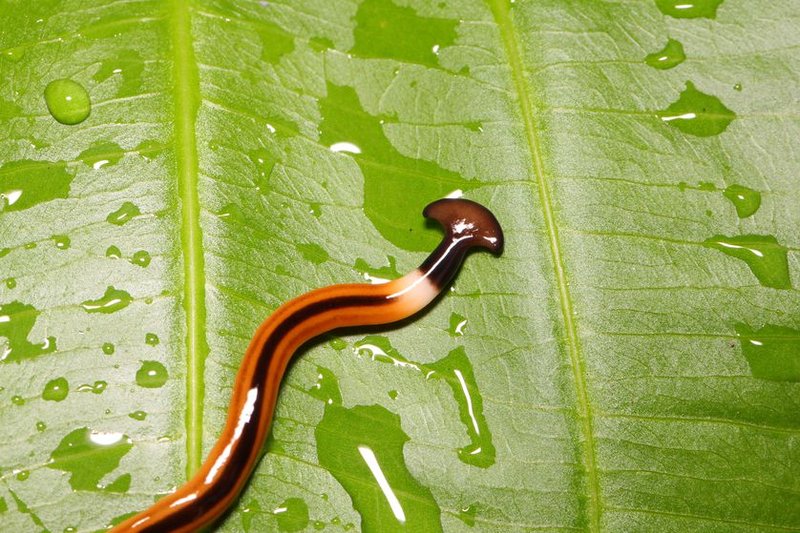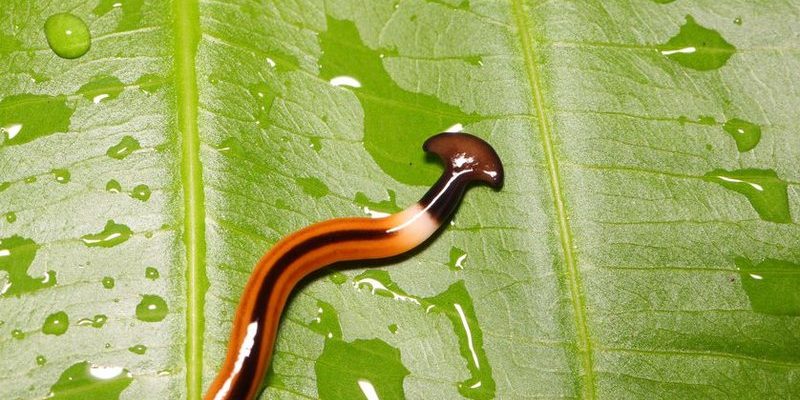
So, what exactly are hammerhead worms, and how do they relate to soil health? To put it simply, think of them as the wild card in your garden ecosystem. Some people view them with suspicion, fearing they’ll disrupt the balance of beneficial organisms, while others see them as potential allies in the soil food web. Let’s dive deeper into this topic and see if hammerhead worms are heroes or villains in the realm of soil health.
What Are Hammerhead Worms?
Hammerhead worms, scientifically known as *Bipalium*, are a type of flatworm found primarily in tropical and subtropical regions. They’re known for their distinct shape, which resembles a hammer, hence their name. Imagine a long, squishy noodle with a head that looks like someone took a hammer to it—kind of weird, right?
These worms can vary in color, usually ranging from brown to gray, and they can grow quite long—up to 12 inches in some cases! Hammerhead worms are also fascinating because they are predatory. They feast on earthworms, slugs, and other small invertebrates. This predatory nature raises an important question: How do they influence the garden ecosystem and overall soil health?
Hammerhead Worms in the Ecosystem
Let’s face it, every creature in the soil plays a role. Hammerhead worms are no exception. They exist within a complex food web where each organism contributes to nutrient cycling and soil structure.
In their role as predators, hammerhead worms can control populations of other invertebrates. For instance, they might help keep slug numbers in check. However, their favorite snacks include beneficial earthworms, which are essential for aerating soil and promoting healthy plant growth. So, while they might manage some pests, they could also disrupt other valuable species.
It’s a balancing act. Gardens thrive when there’s a healthy mix of organisms, and introducing hammerhead worms can tip that balance. Here’s where things get tricky: if hammerhead worms take over, they can hinder soil health by reducing the population of earthworms. That brings us to the next point.
Impact on Soil Health
So, are hammerhead worms harmful or beneficial to soil health? This is where opinions differ. Some gardeners argue that their predatory behavior can lead to a decline in earthworm populations, which are vital for healthy soil. Healthy soil is rich in nutrients, has good structure, and supports plant life. Earthworms, with their burrowing, help improve drainage and aeration, making them invaluable allies in the garden.
On the other hand, there are those who believe hammerhead worms can contribute positively to soil health by acting as natural pest controllers. By keeping certain populations in check, they might help maintain a balance among soil organisms. It’s like a double-edged sword—one side can lead to destruction, while the other can offer control.
Ultimately, the impact of hammerhead worms on soil health can depend on local conditions and their population density. If you have a few in your garden, you might not notice much difference. But a large population could have noticeable effects.
How to Identify Hammerhead Worms
Identification is key if you want to manage these creatures effectively. Hammerhead worms are unique enough that they can be recognized without much effort.
Here are some identifying features:
- Shape: As mentioned, their head looks like a hammer or a spade.
- Length: They can grow up to 12 inches long.
- Color: Usually shades of brown or grey, sometimes with stripes or patterns.
- Movement: They glide along the soil surface in a smooth, wavy motion.
If you spot something that checks these boxes, it’s likely a hammerhead worm. If you’re concerned about their presence, it’s essential to monitor their population and how they affect your garden.
Managing Hammerhead Worms
If you’ve decided that hammerhead worms aren’t your garden’s best friend, managing their presence is possible. Here are some strategies:
- Physical Removal: Wearing gloves, you can remove them by hand and dispose of them elsewhere. Just be cautious—you don’t want to touch them with bare skin since they can secrete a mild toxin.
- Encouraging Beneficial Organisms: By adding compost, mulching, and planting diverse crops, you can support earthworm populations and other beneficial organisms.
- Soil Management: Maintaining good soil health through regular testing and adding organic matter can help create an environment where hammerhead worms don’t thrive.
These strategies can help keep your garden ecosystem balanced, giving the beneficial organisms the upper hand.
So, what’s the verdict on hammerhead worms? They certainly add a layer of complexity to your garden’s ecosystem. While they have the potential to control some pest populations, they can also threaten valuable earthworms and disrupt soil health.
If you have them in your garden, observe how they affect other organisms. Keeping a balanced ecosystem is key—like a well-tuned orchestra, where every player has a role. Understanding your specific situation and managing it accordingly can lead to thriving soil and lush plants. Remember, every garden is unique, so what works for someone else might not work for you. In the end, it’s about creating the right environment for health and growth. Happy gardening!

